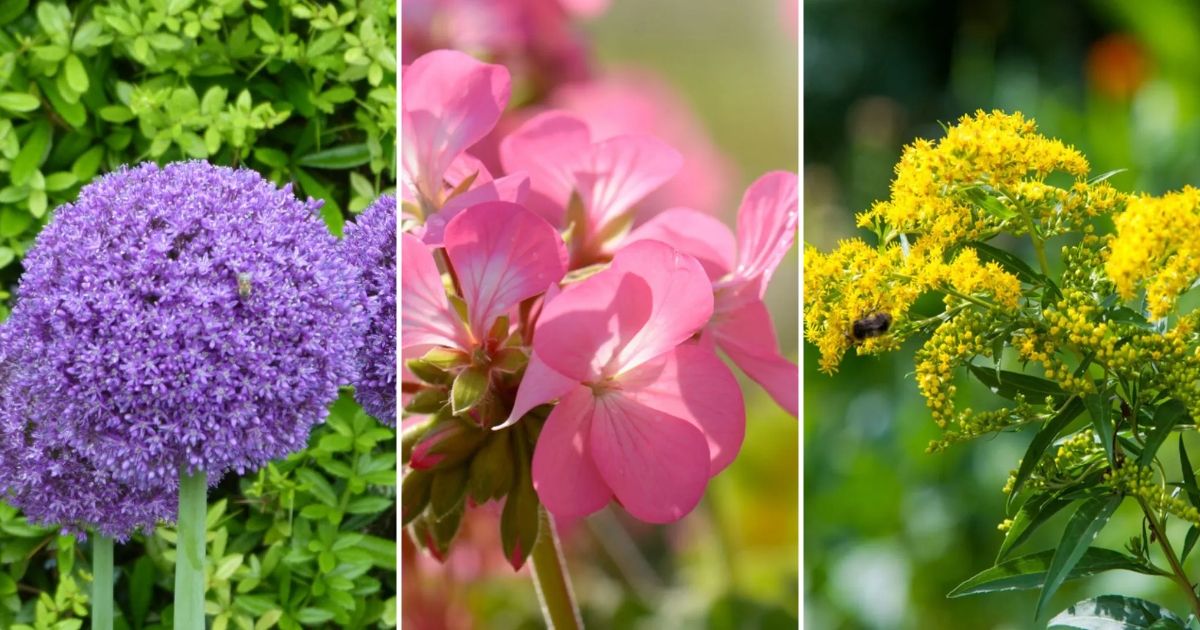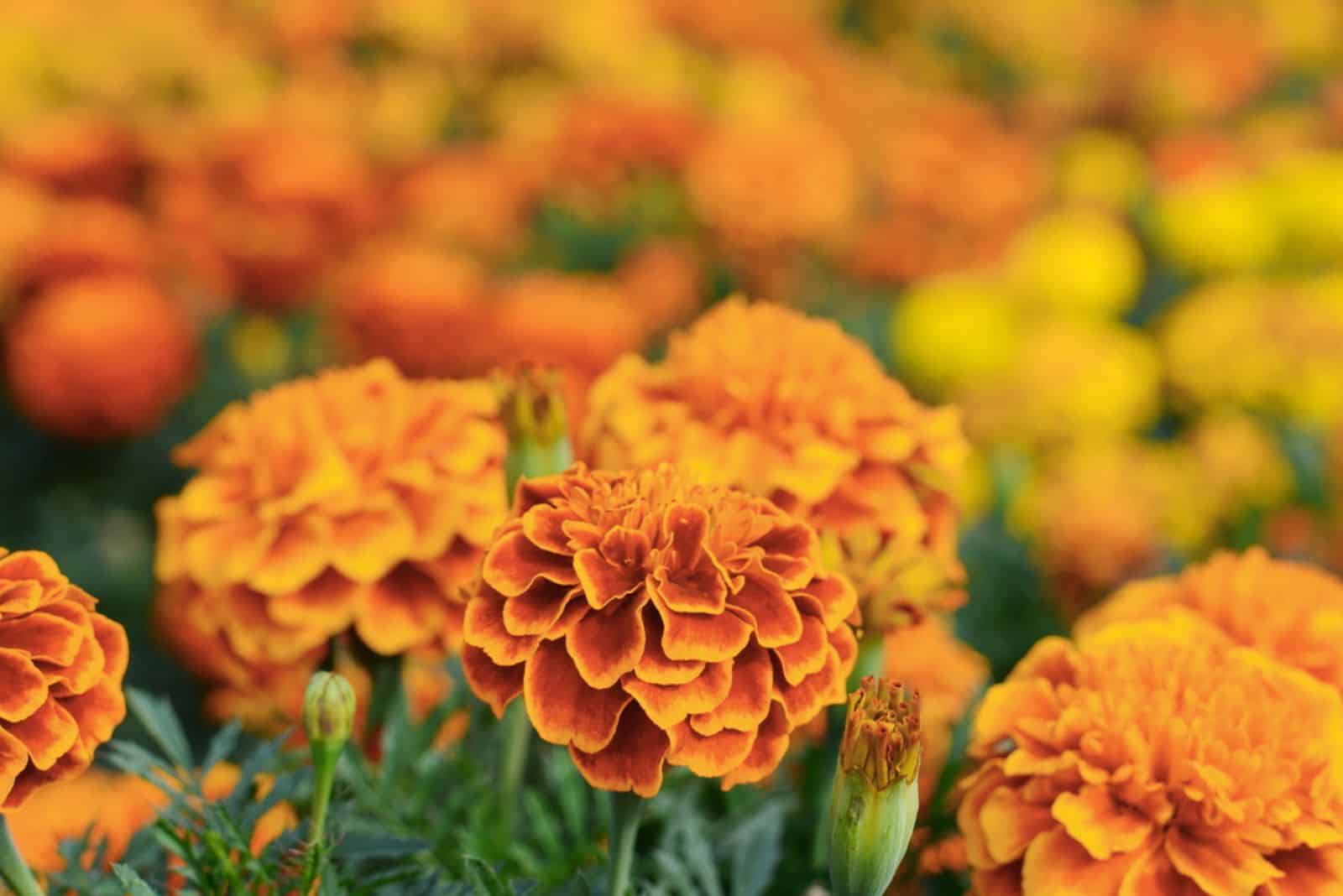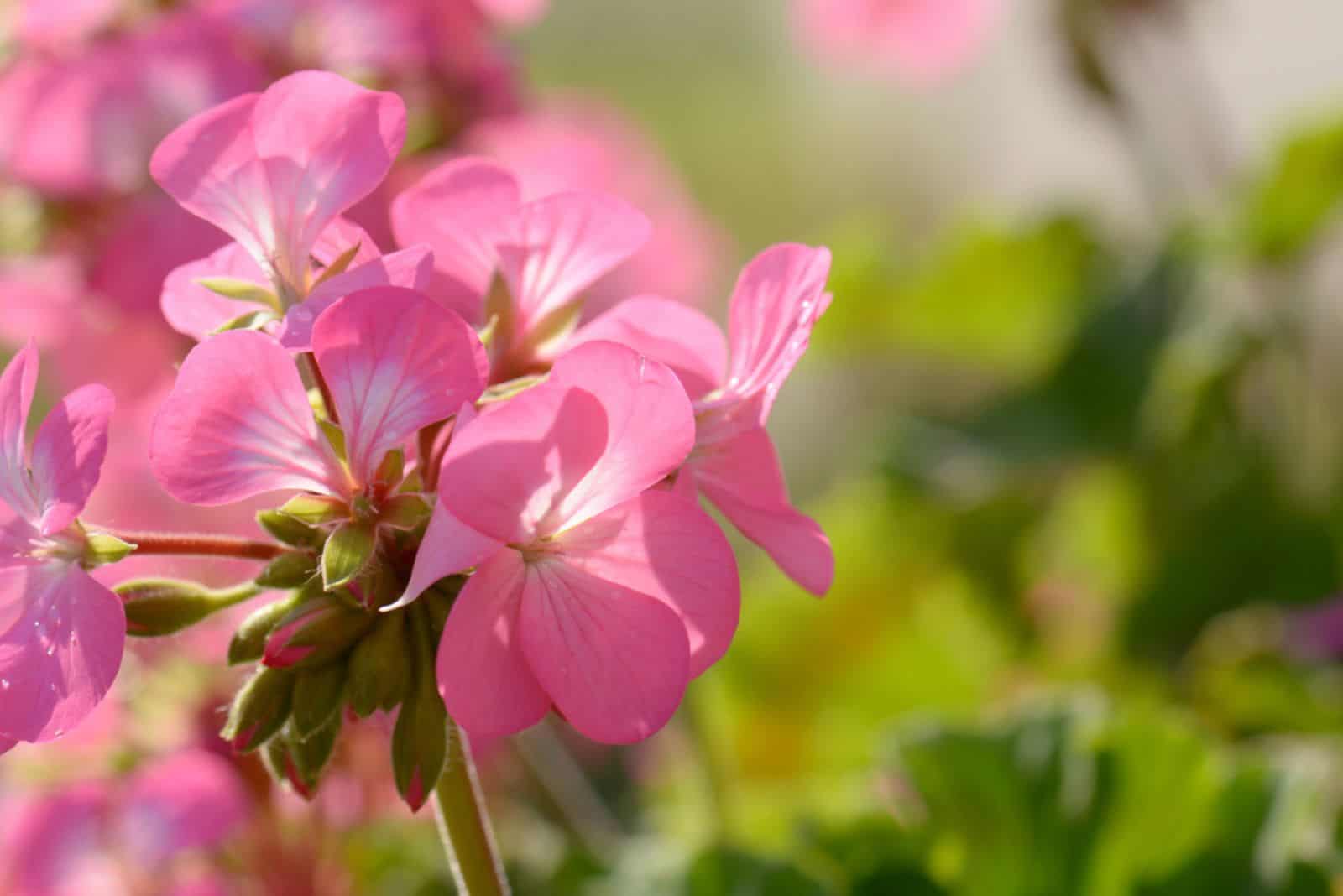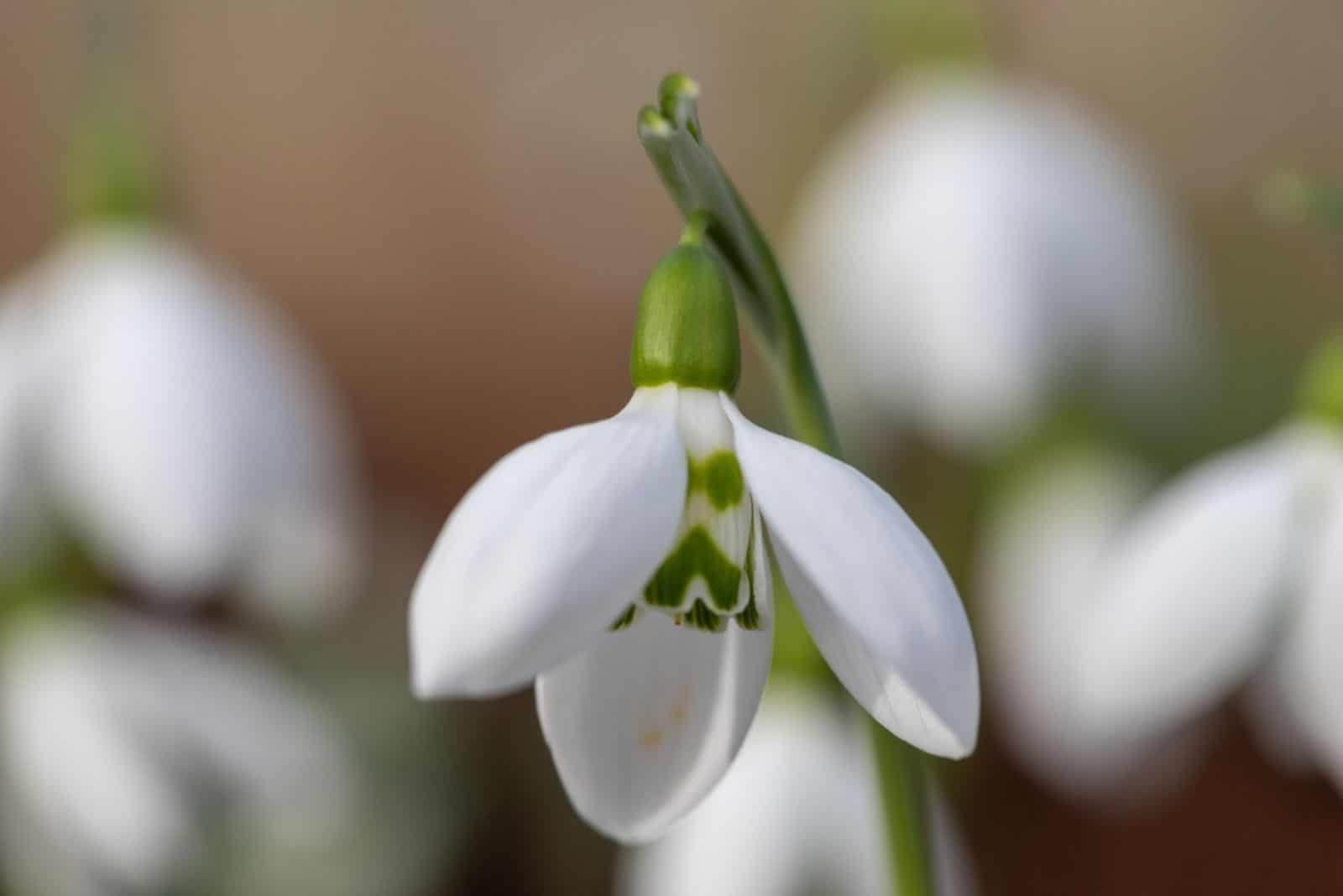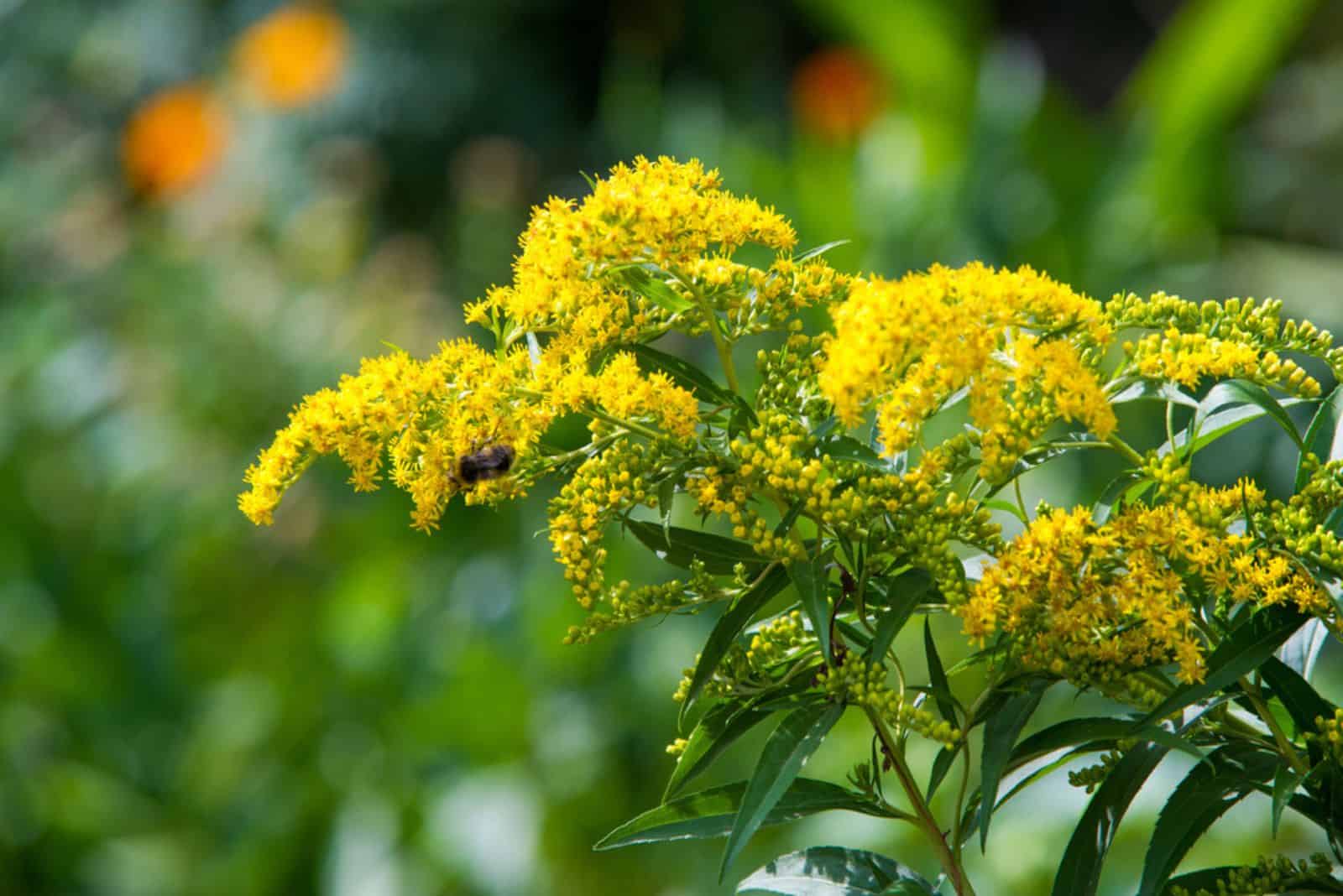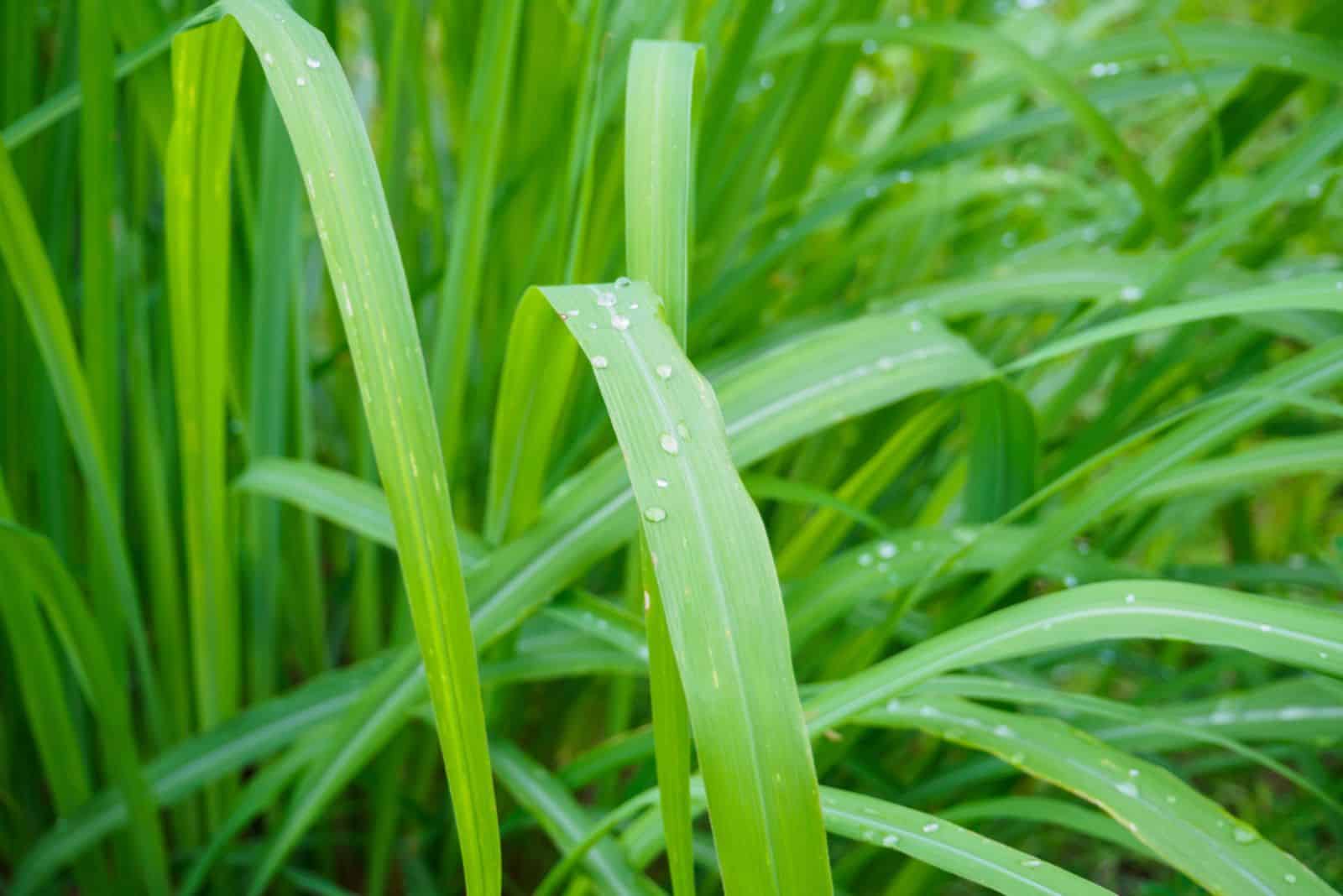Squirrels may be cute, but their appetite for destruction can ruin your plants!
From stealing seeds to feasting on your harvest, these adorable furry creatures can quickly become a gardener’s nightmare. Luckily, there are effective ways to keep these critters at bay and protect your garden.
The easiest way to deter squirrels is by growing plants that they tend to avoid. In this article, we are going to help you create a squirrel-free garden that’s beautiful and abundant.
Let’s dive right in!
1. Marigolds
We’ll start our list with one of the prettiest flowers out there!
Marigolds are low-maintenance flowering plants that produce orange and yellow flowers with a distinctive scent. They come in various sizes and varieties, from compact dwarves to tall and bushy plants.
With their cheerful flowers and dense foliage, they can really add a pop of color and charm to any garden.
As well as their aesthetic purposes, another reason to grow marigolds is to keep squirrels away. Although bees and butterflies love their strong fragrance, these fluffy critters despise them.
Planting marigolds around vulnerable areas or as border plants can create a natural barrier that squirrels are less likely to cross.
These flowering plants grow and thrive in full sun and partial shade, and adapt to various soil types. Regular watering is required to keep the soil evenly moist. However, don’t overdo it as marigolds are susceptible to root rot.
2. Rosemary
Rosemary is an aromatic herbaceous plant that produces needle-like leaves and small, delicate flowers in shades of blue, purple, or white. There are different rosemary varieties, from trailing rosemary to bushy types.
Even though you might find the rosemary fragrance soothing, squirrels don’t agree. They are generally repelled by the strong scent of rosemary.
Additionally, rosemary’s dense and woody nature can make it difficult for squirrels to climb over.
This herb grows well in full sun and well-draining soil with a pH between 6.0 and 7.5. Once established, rosemary becomes drought tolerant and doesn’t require much watering. Prune your rosemary regularly to maintain its shape and encourage healthy growth.
It can be grown both in containers or as a part of a herb garden, which makes it suitable for indoor and outdoor gardening.
3. Alliums
Alliums are a group of flowering plants that includes onions, chives, garlic, leeks, scallions, and shallots. They produce eye-catching flower heads composed of multiple individual flowers.
These flowers differ in size and color, ranging from delicate lavender to vibrant purple and white. They also have a pungent odor, particularly onions and garlic, which squirrels can’t stand.
In addition, the tall flower stalks and dense flower heads of alliums can make it challenging for squirrels to access nearby plants.
These plants grow well in full sun and soil that drains well. Minimal watering is required once they are established. You can plant bulbs in the fall for spring blooms, or in the spring for summer blooms.
4. Hyacinths
You can also plant hyacinths to deter squirrels from your garden. These are beautiful spring-blooming flowers that produce vibrant and fragrant blooms. They come in purple, pink, white, and blue.
Their tall flower stalks and dense clusters of bell-shaped flowers not only add a touch of elegance to the garden, but also help to keep squirrels away!
These flowers grow best in full to partial shade. They can also thrive in cooler climates. Hyacinths prefer well-draining soil and regular watering. However, they should be kept slightly drier during their dormant period in summer.
5. Geraniums
Geraniums are popular flowering plants known for their lovely blooms and alluring foliage. They come in various sizes and shapes, with flowers ranging from single to double blooms.
Their flowers have a strong scent which can help deter squirrels from munching on your plants.
Geraniums grow well in full sun and partial shade. They can be grown in containers or garden beds and regular watering is required, although you should let the soil dry out between waterings.
You can grow them together with marigolds as they are good companions to geraniums.
6. Lily Of The Valley
Here is yet another plant with delicate flowers that can make your garden look like it came out of a fairy tale!
Lily of the Valley is a charming perennial plant that produces white bell-shaped flowers and dark green lance-shaped leaves. They truly add beauty and elegance to the garden!
While not a direct deterrent, planting Lily of the Valley can help protect other plants in your garden. Squirrels are less likely to disturb areas where Lily of the Valley is planted because they prefer open spaces.
This is why these perennials can be used as borders for vulnerable plants in your garden.
In addition, they love cool and moist conditions, which makes them ideal for shady areas or borders. You can grow Lily of the Valley in partial to full shade, and they thrive in well-draining soil.
7. Galanthus
Galanthus, otherwise known as snowdrops, are small bulbous plants that produce dainty white flowers and grass-like leaves. They bloom early and are considered a sign of spring!
Their bulbs contain a toxic compound called galantamine, which deters squirrels from digging them up. They can also protect nearby plants from getting wrecked by these critters.
Galanthus grow best in well-draining soil and partial shade. They can also tolerate full sun, though they prefer cooler temperatures. These plants are generally low-maintenance and require minimal watering once established.
8. Daffodils
Let’s talk about yet another iconic spring flower!
Daffodils are known for their cheerful yellow or white flowers that can really spruce up a garden. They come in various sizes and forms, offering a wide range of options for gardeners.
Similar to the galanthus, daffodils also have toxic bulbs that make them unappetizing to squirrels. By planting daffodils in your garden, you can create a natural deterrent for these pesky pests.
Daffodils can grow both in full sun and partial shade. They thrive in various climates but prefer well-draining soil. They require moderate watering and can tolerate some drought once established.
Read also: 9 Things You Probably Didn’t Know About Daffodils
9. Fritillaries
Fritillaries are spring plants that produce unique bell-shaped flowers in different colors, including purple, orange, and yellow. The most common ones are purple with checkered patterns all over their petals.
Their fragrance can attract pollinators like bees, and at the same time repel critters such as squirrels.
Fritillaries prefer growing in full sun or partial shade. They are relatively low-maintenance and can thrive in various types of soil. They require moderate watering and can benefit from a layer of mulch to retain moisture.
10. Catnip
While cats might adore catnip, squirrels absolutely despise it!
Otherwise known as Nepeta cataria, catnip is a perennial herb that belongs to the mint family. It produces clusters of small purple or white flowers with aromatic foliage.
Their unique fragrance acts as a natural deterrent. Planting catnip near vulnerable areas in your garden can help keep squirrels at bay.
Catnip prefers growing in soil that drains well, and can be grown in both full sun and partial shade. These plants are relatively hardy and can tolerate various soil types. They can be trimmed after flowering to encourage bushier growth.
11. Goldenrods
These are perennial flowering plants that produce tall stems and clusters of yellow flowers. They add color and texture to gardens, and are particularly attractive to pollinators like bees and butterflies.
Besides attracting these beneficial insects, they also keep squirrels at bay.
Goldenrods prefer growing in full sun. They can grow in different soil types, such as clay or sandy. They should be watered regularly until established. After that, they are generally low-maintenance and don’t require much watering.
You can also add mushroom compost to boost their growth.
12. Mint
Mint is a famous herb that is often grown for its aromatic leaves and small flowers that come in purple or white. There are different varieties of mint, including peppermint, strawberry mint, chocolate mint, spearmint, etc.
As well as being used for culinary purposes, mint can also serve as a natural squirrel repellent. Consider planting mint near vulnerable plants or creating a border with mint to create a natural barrier.
However, be careful as mint can also spread and take over if not properly contained.
This herb thrives in full sun to partial shade and can grow in different soil conditions. Mint is usually planted in containers or controlled areas as it can become invasive and spread quickly.
Regular watering and occasional pruning will keep the plant healthy.
13. Lemongrass
We are ending our list with a lovely ornamental grass!
Lemongrass, otherwise known as Cymbopogon, is a perennial grass with aromatic stalks and grass-like leaves. It has a refreshing lemony fragrance, hence the name lemongrass. It is widely used in culinary and medicinal applications.
This grass contains oil which has a strong scent that squirrels find unpleasant. Planting lemongrass in your garden can help deter squirrels from entering and causing damage.
Additionally, the tall and dense growth of lemongrass can create a natural barrier that discourages squirrels from munching on your other plants.
Lemongrass thrives in well-draining soil and full sun. It requires warm temperatures and is best suited for USDA hardiness zones 9 through 11. Regular watering and occasional fertilization can boost its growth.
Good luck keeping squirrels out of your garden, I hope this article helps!
Until next time.

